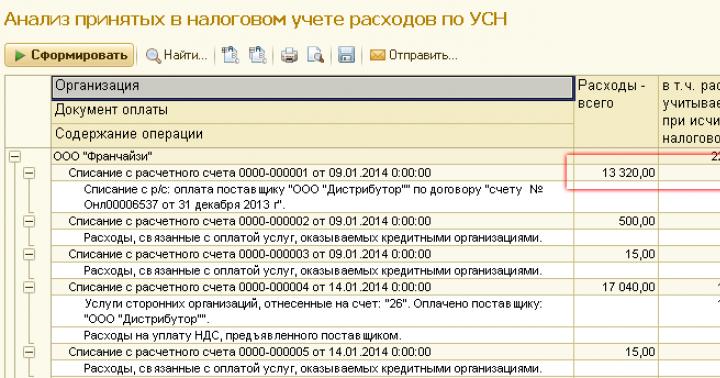A good orthopedist is a salvation for your spine and joints. But before proceeding directly to therapy, it is necessary to establish an accurate diagnosis. This is easy and simple to do by visiting an orthopedist at the Free Movement Medical Center.
Why is a preliminary consultation necessary?
The list of diseases of the human musculoskeletal system is extremely extensive. But the clinical manifestations of various pathologies can be largely similar. And naturally, effective treatment only possible if the diagnosis is accurately established. Then the specialist fully understands the picture of the disease and develops a clear treatment regimen.
The Free Movement Medical Center offers its patients a free consultation with an orthopedist. This is necessary in order to identify the cause of the symptoms that bother you and decide on further treatment tactics.
In addition, the course and manifestations of the disease vary from patient to patient. This means that the treatment plan must be individual. During a preliminary examination in our clinic, the orthopedic doctor will establish a diagnosis and also prescribe the additional tests you need.
In the case of diseases of the musculoskeletal system, self-diagnosis and self-medication are simply unacceptable! Indeed, in case of even the slightest mistake, you will not only not improve your health, but, on the contrary, you can seriously harm your body. This is explained by the fact that different orthopedic diseases, despite the external similarity of symptoms, may have different contraindications to therapy.
The main symptoms indicating that you need to consult an orthopedist:
- stiffness of movement and difficulty lifting weights, especially in the morning,
- periodic occurrence of pain in the back, neck or limbs,
- swelling in the legs at the end of the day, heaviness and pain in the lower extremities,
- crunching and pain when turning the body or moving the joints,
- posture disorders,
- change in joint size, swelling and redness
- suspicion of developing flat feet.
A free consultation with an orthopedic doctor at the Free Movement medical center is an excellent opportunity to undergo a full examination of your osteoarticular system. A visit to our specialists will allow you to establish a preliminary diagnosis and select the most effective treatment regimen for your case.
Movement is an integral part of human life, one of essential functions body, which is carried out due to the work of the musculoskeletal system. Violation of its functioning can have irreversible consequences, which is why it is so important to promptly consult a specialized orthopedic doctor who treats diseases of the locomotor system, based on the individual characteristics of the patient.
Orthopedic doctor: what kind of doctor is this? Specifics of activity
Let’s answer the common question: “An orthopedist, what kind of doctor is this?”: This is a doctor whose work is aimed at diagnosing and treating injuries and diseases of the musculoskeletal system.
The structure of the musculoskeletal system includes:
2. Ligaments (fibrous compounds that connect the bone structure);
3. Muscles (a set of muscle fibers);
4. Tendons (part of the muscles responsible for their fixation to the bones);
5. Fascia ( connective tissue, which covers various structures of the body)
The doctor’s competence includes a consultation, where the orthopedist examines visible damaged structures, clinical diagnosis of the patient, followed by referral for additional radiation (MRI, ultrasound, radiography, etc.) or laboratory diagnostics (tests).
Based on the patient feedback received and the examination results, the orthopedist draws up an individual treatment plan, accompanies the patient throughout the entire therapeutic period, taking into account his feedback, and also observes the dynamics of the condition during repeated examinations.
When should I make an appointment with an orthopedist? Symptoms of musculoskeletal diseases
Symptoms of musculoskeletal diseases usually manifest themselves in:
2. Functional impairment;
3. Sensitivity disorders.
The main symptoms of diseases of the musculoskeletal system, if you feel them, you need to make an appointment with an orthopedic doctor, are:
Pain in or around the affected area;
Limitation of range of motion, dysfunction;
Deformation of the affected area (joint, spine);
Violation of the limb axis (for example, a broken arm);
Changes in soft tissue (swelling, bruising, change in skin color);
Local increase in temperature (hot joints);
Numbness (eg, arms, legs);
Impaired sensitivity.
Need to pay special attention that the lack of visibility of external damage when receiving an injury (the axis of the limb is not broken, there is no inflammation, redness of the skin, pain) does not yet indicate the absence of internal damage, since a person may experience traumatic shock, and in the meantime organs or tissues may be damaged from the inside (for example, with a broken rib)
If the above symptoms appear, you need to start by choosing the best orthopedist in Moscow, based on reviews from online resources. Next, make an appointment with a highly qualified orthopedist.
You can get competent advice in Moscow both for a fee and for free. As a rule, this does not depend on the qualifications of the orthopedist, but is determined by the clinic - the medical center where the orthopedist conducts the appointment. Special promotions, which are often carried out by both clinics with high and low prices, will help you make a free appointment with the best orthopedist.
If the consultation is free, the patient will be able to spend the saved money, for example, on orthotics, which will ultimately bring more benefits than just a paid visit to the orthopedist. According to patient reviews, a paid doctor’s appointment is almost always accompanied by the provision of services at an inflated price. A free appointment with an orthopedist does not oblige the patient in any way and you can get a consultation with a good doctor without the risk of expense.
Appointment and consultation with an orthopedist at the center. What does the orthopedist look for?
An initial doctor’s appointment or consultation with an orthopedist in Moscow is by appointment and includes:
Anamnesis collection, which involves a conversation with the patient.
The doctor asks questions about complaints, previous illnesses and injuries that may be directly related to orthopedic health problems.
At the same time, it is important for an orthopedic doctor to know about diseases that, at first glance, do not relate to current ailments. This is due to the fact that, for example, one of the causes of rheumatoid arthritis is the entry of streptococcus into the blood and its further settling in the joints, for example, due to a sore throat that a person once had.
The following stages of an initial appointment with an orthopedist by appointment:
Examination of limb/spine function;
Conducting specific tests aimed at determining the characteristic features and degree of the disease (presence of unnecessary sounds (crepitus), difficulty in flexing/extending the joint (contracture), swelling, hot joint during palpation).
Upon completion of the initial appointment, examination and consultation, the orthopedist may prescribe the patient a diagnostic examination aimed at a detailed examination of the area that the patient is complaining about and determining the cause of the disease.
Diagnosis of diseases of the musculoskeletal system
Diagnosis of a disease of the musculoskeletal system is an integral stage of the treatment process by a doctor, which allows the orthopedist to determine the disease and its causes, the degree of damage, and also draw up a detailed treatment plan based on the examination results, and not just the patient’s feedback on the condition of the body.
Depending on the area being examined, an orthopedist at a diagnostic center in Moscow prescribes the following diagnostic methods:
1. X-ray (visualization of bone tissue and joints);
2. MRI, magnetic resonance imaging (studies of soft tissues of muscles, ligaments, tendons, joints);
3. CT, computed tomography(examination of bone structures in many sections, planes);
4. Scintigraphy (shows accumulations of radioisotope materials that accumulate in altered tissues);
5. Ultrasound (superficial damage to the structure of the limb is visible);
6. Arthrophonography (records the sounds of rubbing parts of the knee joint, which indicates inflammation (arthritis, synovitis), arthrosis, etc.);
7. Biomechanical study (checking the rhythm of movement, determining the dynamics).
Since, as a rule, during a detailed examination the doctor does not rely on one diagnostic method, when determining the specifics of diseases of the musculoskeletal system, the orthopedist can prescribe laboratory diagnostics: tests (in particular when treating patients over the age of 40).
It should be noted that magnetic resonance imaging (MRI) is the most popular diagnostic method due to its absolute safety, affordable price and accuracy in determining musculoskeletal diseases, as can be seen by reading reviews from patients in Moscow. For example, thanks to the results of magnetic resonance imaging (MRI), an orthopedist identifies non-epithelial extraskeletal tissues of muscles, tendons, fibrous plates, and structural features of the skeleton.
What does an orthopedic doctor treat?
The results of the research conducted by the orthopedic surgeon allow him to make initial recommendations, determine a plan and a comprehensive treatment algorithm that the patient must follow.
In general, those diseases of the musculoskeletal system that an orthopedic doctor treats can be divided into:
The most common diseases of the musculoskeletal system treated by an orthopedist are:
Spondylosis (changes in the structures of the vertebrae in the spine);
Hernias (changes in the spinal disc, protrusion of its parts);
Rheumatoid arthritis (inflammation of the joints);
Enthesopathy (inflammation of tissues around the joint, capsular ligamentous apparatus);
Gouty arthritis (inflammation of the joints due to improper metabolism)
A good orthopedist, according to patient reviews, not only treats diseases of the musculoskeletal system, but, if necessary, refers the patient to the best specialized doctors in Moscow - a neurologist, traumatologist, rheumatologist, endocrinologist, etc., depending on the specifics of the disease and the degree of its complexity .
Comprehensive treatment prepared by an orthopedist includes:
Invasive procedures: intra-articular and periarticular injections (corticosteroids, hyaluronic acid preparations, platelet-rich plasma). Their main effect is to relieve inflammation and pain;
Physiotherapy: manual, ultrasound and current therapy;
Massage (helps improve blood circulation);
Therapeutic exercises compiled according to individual plan, and aimed at strengthening muscles;
Delayed diagnosis of diseases of the musculoskeletal system can lead to serious, irreversible consequences associated with a malfunction in the motor function of the body, which increases the importance of timely assistance from an orthopedic doctor involved in the diagnosis and treatment of diseases of the musculoskeletal system.
After the appointment, patients must follow the recommendations of the orthopedic surgeon: healthy image life, eat right, engage in supportive physical education - swimming, fitness, therapeutic exercises, as well as undergo preventive examinations and promptly make an appointment with an orthopedic doctor if you feel the slightest ailment.
The best orthopedic doctors in Moscow.
Choose from 1,814 orthopedic doctors based on ratings and reviews, make an appointment by phone or online.
Orthopedist in Moscow: cost of appointment
The price of visiting an orthopedist in Moscow is from 500 rubles. up to 12600 rub.
Found 928 reviews of the best orthopedic doctors.
Who is a traumatologist - orthopedist?
Almost half of the injuries are accompanied by damage to the musculoskeletal system. Orthopedic traumatologists specialize in diagnosing and treating bone fractures, joint injuries, and soft tissue injuries such as muscles, tendons, and ligaments. In many complex cases, such as patients with multiple bone fractures, fractures near the hip or knee joints, doctors have to resort to orthopedic surgery to restore the functionality of the damaged parts of the body.
What does the doctor treat?
Specialists in traumatology help both with relatively simple injuries, such as simple cracks and fractures of bones, and with more complex injuries, including pelvic and femoral neck fractures, joint injuries. In addition, orthopedists provide treatment for malunion of broken bones or non-healing of fractures, especially in elderly patients. Cases of infection of bones (osteomyelitis) and soft tissues, inflammation of injured joints require special attention from doctors.
In what cases should you seek help from a doctor?
Injuries to bones and soft tissues that require contact with a traumatologist may be accompanied by the following most common symptoms:
- Swelling, pain,
- Bleeding when the skin is broken by a broken bone,
- Bruises, bumps, protrusions and bruises at the site of injury,
- Inability to move a limb without pain,
- Change in the shape or integrity of a leg, arm, fingers,
- Numbness of the limbs, tingling sensations, “pins and needles”,
- Crunching or cracking, during or after an injury.
How does a doctor treat injuries?
Treatment for an orthopedic injury depends on its severity. Minor injuries such as simple fractures, bruises, dislocations and sprains are treated non-surgically with long-term immobilization in plaster or modern orthoses (removable splints) to allow the injuries to heal on their own. Severe associated injuries, such as falls from heights or car accidents, may require a series of reconstructive surgeries, which may include:
- General surgery,
- Endoscopic operations,
- Internal fixation, in which orthopedic devices hold together broken bone fragments,
- Bone grafting and bone or joint transplantation,
- Lengthening (stretching) of the limbs,
- Replacement of joints with artificial ones,
- Reconstruction of soft tissues.
What is the treatment time for fractures and other injuries?
The consequences of orthopedic injury are usually accompanied by a long recovery period. For minor injuries without complications minimum term healing takes three to four weeks. Arm or hand injuries, rib or collarbone fractures can take 6 to 8 weeks to heal. The healing time for fractures is shorter, the younger the victim. Most patients recovering from injuries are advised to undergo good medical rehabilitation to avoid muscle atrophy and restore joint mobility.
An orthopedist-traumatologist, who is simply and briefly called an orthopedist or traumatologist, is a specialist who has mastered the practical skills of providing routine and emergency care to patients who have been injured or have diseases of the musculoskeletal system. In Moscow, traumatologists have the most modern techniques, allowing to fix fractures clearly and with minimal pain, to correct old bone defects, as well as soft tissue defects of joints and limbs. Contacting such specialists in Moscow allows you to avoid serious consequences of injury to the musculoskeletal system.
What does an orthopedist treat?
They refer any problems to a traumatologist-orthopedist:
- shoulder blades,
- stop,
- backs,
- tendons,
- ligaments,
- muscles,
- nerves
- humerus bones,
- hip and knee joints.
Orthopedists are consulted for dislocations, fractures and serious, very severe injuries.
For treatment in Moscow, a traumatologist uses not only standard research and treatment methods, but also such as redressal, i.e. closed or bloodless surgery. With his own hands, the specialist carries out step-by-step, forced correction of deformities and pathologies in the joints. This way you can fix:
- arthrogryposis,
- rachitic curvature of the limbs,
- contracture,
- fibrous ankylosis,
- clubfoot,
- improperly healing fractures, etc.
An orthopedist in Moscow not only treats diseases, he tries to prevent them, studies processes in the patient’s body that arise under the influence of factors:
- radioactive or radiation,
- electrical,
- mechanical,
- thermal,
- chemical and others.
Special research is being conducted in the field of combined forms of damage, which cause severe disruptions in the functioning of important systems of the affected body.
In what cases should you contact an orthopedist?
People are referred to an orthopedic traumatologist in Moscow for bone fractures, dysfunction and repeated fractures, as well as:
- with residual effects of previous polio;
- with bruises,
- with sprains,
- with burns,
- with frostbite,
- with serious animal bites,
- with complaints of constant pain in the limbs,
- With severe pain in the joints and spine.
In Moscow, people turn to orthopedists with problems such as:
- fibrous osteodysplasia;
- parathyroid osteodystrophy;
- flat feet;
- deforming osteosis;
- posture defects;
- tumors and so on.
Deformities discovered during examination will also be sent to a traumatologist:
- chest,
- spine,
- limbs,
- large and small joints and so on.
Where in Moscow can you get an education as an orthopedist-traumatologist?
In order to become a specialized specialist, a future traumatologist must obtain a general medical education and undergo training at the Department of Traumatology and Orthopedics:
- RUDN University,
- RNIMU named after. N. I. Pirogova,
- MGMSU named after. A. I. Evdokimova,
- First Moscow State Medical University named after. I.M. Sechenov or other universities in Moscow.
After this, orthopedists will undergo residency, long-term practice, and constant advanced training.
Famous doctors of orthopedics and traumatology who worked in Moscow
From time immemorial, doctors and healers have been treating injuries in Russia. In 1707, the first professional Russian medical institution opened. It was the Moscow Medical and Surgical School. It was she who began to train professional doctors.
The introduction of foreign principles for training specialists in the field of trauma orthopedics was very difficult. The situation changed with the arrival of Mudrov at Moscow University in 1809. Russia owes him the approval of the school of phased clinical and theoretical education.
The end of the 19th and beginning of the 20th centuries marked the period of formation and flourishing of orthopedics. The founder of reconstructive traumatology is Pirogov. A huge contribution to the development of the field was made by the brilliant doctor Basov, who was the teacher of the no less brilliant Sklifosovsky.


